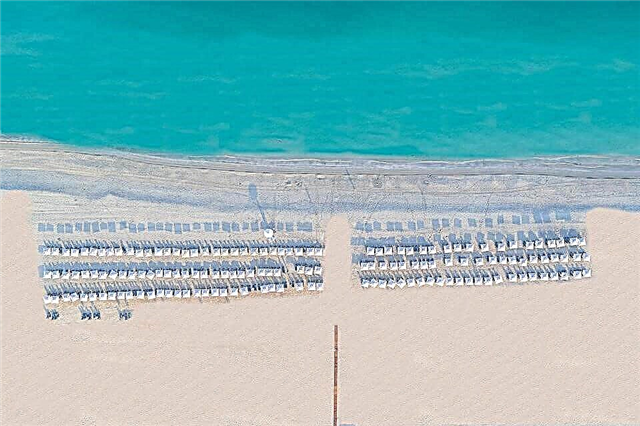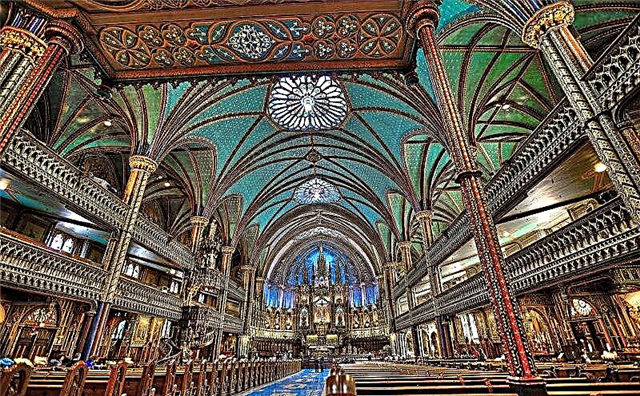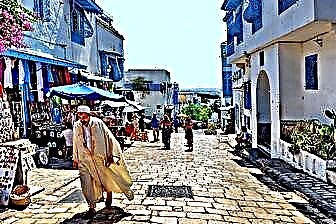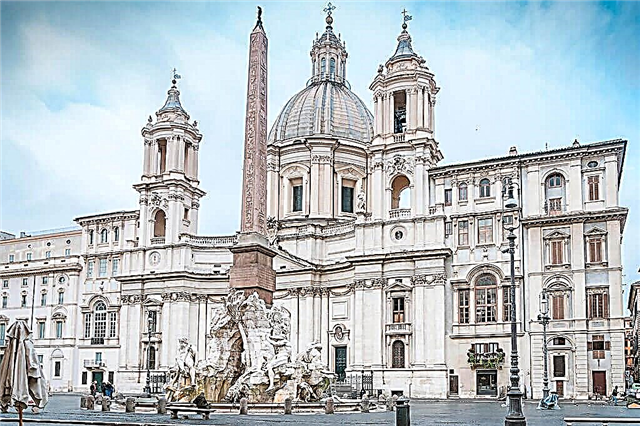The streets and squares of historic Rome took shape during the Baroque era. Churches, palaces, fountains in this architectural style are present everywhere. This is convinced by one of the most famous and beautiful places in the capital of Italy - Piazza Navona. The colorful, ceremonial and cozy square has an unusual shape. It is elongated in length and follows exactly the contours of the ancient stadium. The place is conducive to pleasant outdoor activities. Here street actors show funny pantomimes, musicians play and sing, artists put up their paintings for sale. The square is bordered by graceful Baroque mansions, a temple, and restaurants. Piazza Navona is decorated with three magnificent fountains that are very popular with tourists.
History

Piazza Navona has absorbed the image and character of ancient Rome. In the middle of the 1st century AD, a stadium rose on this area, expanded at the initiative of Emperor Domitian in 85. The arena was a favorite building of the Romans, who revered the spectacular spectacle. The stands could accommodate more than 15 thousand people. The stadium occupied a plot of land measuring 275 × 106 meters. From the outside, the monumental structure was fenced in by arched travertine arcades, in which the shops of the merchants were located. The stadium was intended for sports events without bloody and fierce gladiatorial battles. Here Domitian established an athletic competition.
The main disciplines held in the arena were running, javelin throwing, discus throwing, fist fights and horse racing. After the fall of the Roman Empire, the stands of the stadium were significantly dilapidated. During the period of medieval civil strife, the poor and desperate Romans took away travertine stones for their own buildings. Many residents preferred to erect houses right on the ruins of the stadium. The foundations literally consisted of fragments of monuments, arena structures. The dwellings were built in such a way that the boundaries of the settlement resembled the contours of a stadium. A vegetable and fruit market was formed on a huge open space, and various festivals and carnival processions were held here.
In the 17th century, an event took place that radically changed the appearance of the square. Pope Innocent X started a global restructuring of the area. His successful career as the head of the Papal States contributed to the creation of a pompous architectural ensemble. Innocent X wanted to leave behind a cultural heritage on the square, so he did not skimp on allocating significant sums of money from the papal treasury to implement his idea. The talented Francesco Borromini became the architect of the buildings, and the master Gian Lorenzo Bernini was hired to build the fountains.
Both architects were the best in the city and at the same time irreconcilable rivals, which, as a result, benefited Rome. The competition between sculptors gave birth to unique masterpieces. The residence of the Pope, magnificent palaces, churches and fountains were erected in the Baroque style. The square acquired a luxurious look and became known as Navona, which translated from Greek means competition.
Fountains

The main decorations of Piazza Navona are three fountains at once, which are filled with clean drinking water. In the middle of the square stands the famous Fountain of the Four Rivers, erected by Bernini in 1651. Innocent X set the task for the architect to create a majestic sculptural work that should certainly amaze everyone. After a long and diligent work of the architect, a pool with a towering huge rock and four holes in it, from which water flows inexhaustible, appeared on the square.
The grandiose ensemble is crowned with an ancient Egyptian obelisk, on top of which there are a dove and an olive branch. The obelisk is engraved with hieroglyphs denoting words of thanks to Emperor Domitian. Athletes are seated at the corners of the marble stone, personifying in allegorical form the main four rivers of the Middle Ages: the Nile (Africa), the Ganges (India), the Danube (Europe) and the Rio de la Plata (South America).

On the south side of the piazza is the Moor's fountain. The architect skillfully depicted the muscular figure of a man standing on a huge shell. The central part of this composition is the Moor fighting a dolphin. In the 19th century, a number of sculptural elements were added to the pool. These are the so-called newts (divine creatures in the form of a half-man-half fish), crawling out of the shell and blowing into the horns. In the northern part of the square is the fountain of Neptune fighting an octopus with the approval of sea creatures.
The sculpture pool, which today pleases the eye, was not built until the end of the 19th century. The central composition of the fountain is a mythological hero holding a trident in his hands. The marbled muscular figure is saturated with powerful energy. The sculptor depicted Neptune at the moment of inflicting a fatal blow on the octopus. The pool is surrounded by sculptures of sea nymphs, dolphins, horses and cherubs.
Interesting Facts
Several funny and tragic stories are associated with Piazza Navona. In 1652, on the piazza, during hot and sultry days, the Romans closed the fountain drains. Water gradually filled the area to a certain depth. In the light of lights and melodies of serenades, wealthy people, being in chariots, swam around the square and enjoyed the invigorating coolness. When designing the Four Rivers Fountain, Bernini made a mistake in his calculations - the water did not flow into the pool.
The sworn "friend" of the architect Borromini made his own calculations, according to which an inaccuracy was found in the design of the pool. Bernini learned that his competitor figured out how to fix the fountain. He decides to seduce his rival's maidservant and steal the correct calculations, which was perfectly executed. As a result, Bernini corrected everything, and the water poured solemnly to the delight of the public and to the chagrin of Borromini.

Not far from the palace of Pope Innocent X, the church of Sant'Agnese in Agone, dedicated to Saint Agnes, was erected in 1668. In 304 AD, a young Christian woman was executed in Piazza Navona (then still in the stadium). Tradition says that the son of a Roman prefect fell in love with the girl. Agnes could not marry a pagan for her religious beliefs and rejected the young man. For this, the Roman soldiers put the girl naked on the square for general ridicule.
Miraculously, her hair grew so much that it covered her body with a dense veil. The ministers of the pagan temples accused Agnes of witchcraft and cut off her head. Since then, the young Christian woman has been revered by the church. Her relics are still kept in the active Catholic church of Sant Agnese in Agone in Piazza Navona.
Where is it located and how to get there
The Piazza is located in the center of Rome, close to the main attractions. Nearby is the Pantheon, the Colosseum and the Forum. You can get to the square by metro, reaching the Barberini station, as well as numerous bus and tram routes. The place is very popular and crowded, so it is impossible to get lost.











